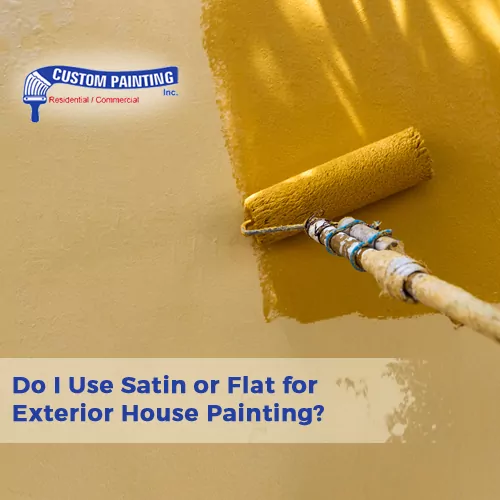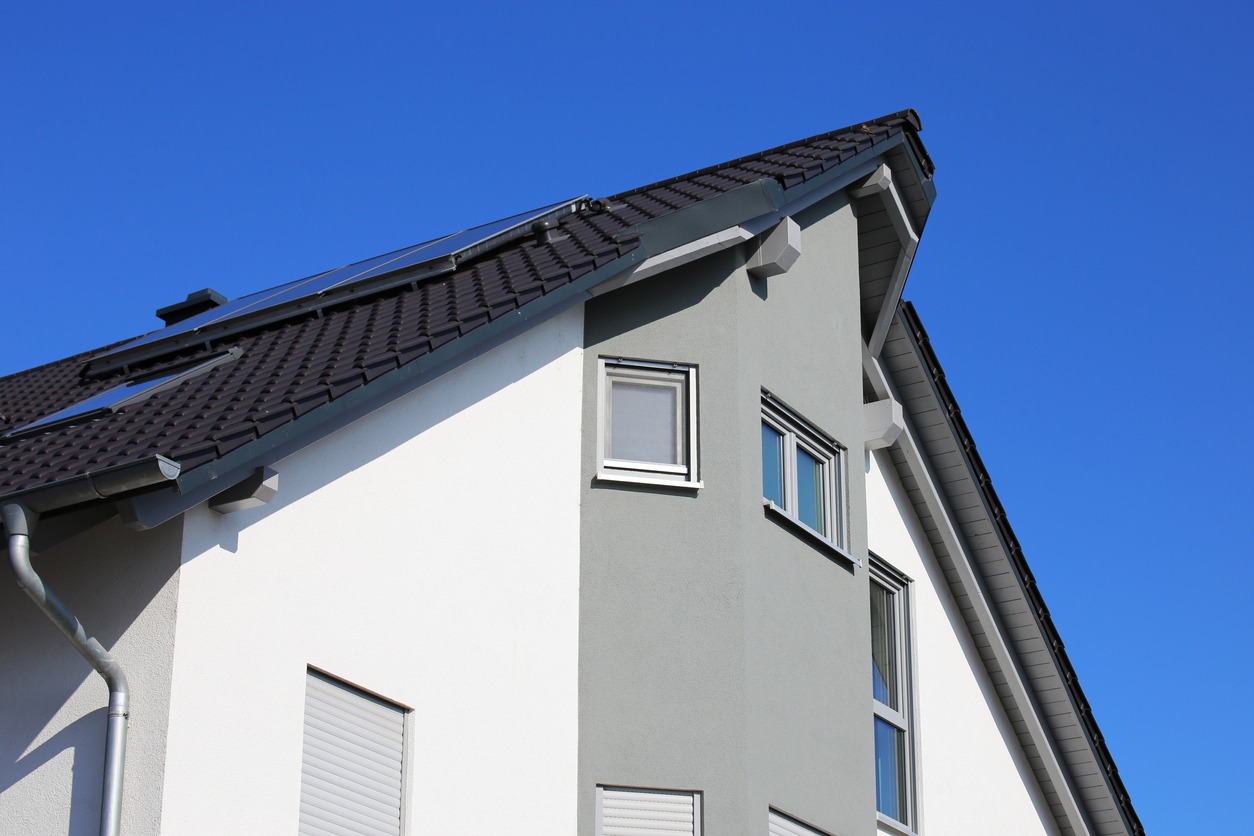House painting is not just a routine maintenance task, but it is also an opportunity for homeowners to express their home’s unique character and enhance their curb appeal. Whether it is an old-fashioned cottage needing a fresh coat or a grand manor poised for a color transformation, house painting in Danville, CA, is an exciting venture.
However, exterior house painting comes with its set of decisions and dilemmas. These include the decision between using flat or satin paint. This is an important choice as it significantly influences not only the aesthetic appeal of your home but also the longevity and maintenance of the paint job. Understanding the distinct benefits and best uses of each finish type is crucial in making a well-informed decision that aligns with the style of your home, the local climate, and your personal preferences. Read this article to learn more about satin and flat paint for exterior house painting.
Overview of Exterior Paint Finishes
When it comes to house painting, especially in a place as aesthetically conscious as Danville, CA, the choice of paint finish plays a pivotal role in both the appearance and longevity of the paint job. Understanding the different types of paint finishes and their unique properties is essential for making an informed decision. Here’s an overview of the most common exterior paint finishes available:
Flat/Matte Finish
A flat or matte paint finish provides a non-reflective, smooth finish. It is ideal for hiding surface imperfections. It can be used best for walls with blemishes, older homes, and low-traffic areas. While flat finish offers excellent coverage, it is less durable and more difficult to clean compared to glossier finishes.
Satin Finish
A satin paint finish delivers a pearl-like sheen, making it a popular choice for exteriors. It is perfect for high-traffic areas, kitchens, bathrooms, and window trims. This paint finish is more durable and easier to clean compared to flat, but it can also highlight surface imperfections.
Satin Finish for Exterior Painting
When considering a paint job for the exterior of a home, a satin finish often emerges as a popular choice. Here’s why a satin finish might be the perfect option for your exterior painting needs:
Aesthetic Appeal
Satin paint provides a soft, pearl-like sheen that is more lustrous than a flat finish but less glossy than semi-gloss. This quality makes it visually appealing, adding a touch of elegance to the home’s exterior. Satin finishes also tend to make colors appear richer and more vibrant, which can enhance the overall look of your home.
Durability and Performance
Satin paint is highly durable, making it an ideal choice for exterior surfaces that endure constant exposure to weather elements. Its finish is also more resistant to mildew and mold compared to flat finishes, a crucial factor in areas with damp climates.
Practical Benefits
Satin finishes are easier to clean than flat finishes, allowing for simple maintenance and upkeep. They can withstand cleaning and light scrubbing without losing their sheen. While not as effective as flat paint in masking flaws, satin paint still does a decent job of hiding minor surface imperfections on exterior walls.
Application Considerations
Proper surface preparation is key, as satin paint will highlight surface irregularities more than flat paint. It’s important to apply satin paint evenly to avoid lap marks, which are more noticeable with this type of finish.
Ideal Use Cases
A satin finish is versatile and works well on a variety of exterior surfaces, including siding, doors, and trim. It’s an excellent choice for homeowners who want to balance aesthetic appeal with durability and easy maintenance.
Flat Finish for Exterior Painting
A flat finish for exterior house painting, while often less discussed than its glossier counterparts, holds its unique appeal and practical advantages. Here’s a closer look at why a flat finish might be the right choice for your exterior painting project:
Aesthetic Qualities
Flat paint provides a non-reflective, matte finish, giving the exterior a classic, sophisticated look. This is particularly complementary to historical or traditional-style homes. It offers a consistent color tone under different lighting conditions, providing a uniform appearance across the exterior.
Surface Imperfection Concealment
One of the major advantages of a flat finish is its ability to mask surface blemishes. On older homes with imperfections in the siding or woodwork, a flat finish can be especially forgiving. The lack of sheen means that surface irregularities like nicks, chips, or rough textures are less noticeable.
Practical Aspects
Flat paint is easier to touch up than glossier finishes. This can be particularly useful for exteriors, where wear and tear or damage might require spot treatments. Unlike glossier finishes, flat paint is less likely to stick to itself, which can be beneficial for surfaces like window sashes and doors.
Application Considerations
Flat finishes can require more paint, as they tend to absorb more into the surface. While advancements in paint technology have improved the resilience of flat finishes, they are generally less resistant to moisture than glossier options.
Ideal Situations for Flat Finish
Ideal for heritage homes or buildings where a muted, classic appearance is desired. Best suited for exterior areas that are not subject to frequent touching, rubbing, or cleaning.
Factors to Consider When Choosing Between Satin or Flat
Deciding between satin and flat finishes for exterior house painting in Danville, CA, involves considering several key factors. The right choice can significantly impact the aesthetics, maintenance, and longevity of your paint job. Here are important considerations to guide you in making the best decision for your home:
- Architectural Style of the Home: Satin finishes often complement modern homes with their slight sheen, while flat finishes are typically favored for traditional or historical homes due to their matte appearance.
- Surface Condition: If your exterior walls have imperfections like cracks, chips, or uneven textures, a flat finish can better conceal these flaws. Satin, with its slight gloss, tends to highlight surface irregularities. On smoother surfaces, a satin finish can enhance the architectural details and provide a cleaner look.
- Exposure to Elements: In areas with high humidity, rain, or extreme weather conditions, satin finishes are often preferred for their better resistance to moisture and mildew. Satin paint can also be more resistant to fading under constant sun exposure compared to flat paint.
- Maintenance and Cleaning: Satin finishes are easier to clean and more resistant to staining, making them ideal for areas that require frequent washing or are prone to dirt accumulation. Flat paint is easier to touch up, which can be advantageous for quick fixes without repainting entire sections.
- Aesthetic Preference: Consider how the sheen of the paint aligns with your aesthetic preferences. Satin offers a subtle glow, enhancing the color richness, while flat provides a more subdued, classic appearance.
- Longevity and Durability: Satin finishes typically offer better durability and longevity, especially in high-traffic areas or places susceptible to wear and tear.
- Color Choice: Different finishes can affect how a color looks in your home. Satin can make colors appear more vibrant, whereas flat finishes might give a more uniform color appearance.
Conclusion
When making your decision, it’s important to weigh the considerations we shared in this article in the context of your home’s architectural style, the condition of your exterior surfaces, and your personal maintenance and aesthetic preferences. Remember, the right paint finish not only enhances the curb appeal of your home but also serves as a protective layer against the varied Californian climate.
In the end, whether you choose the lustrous durability of satin or the sophisticated simplicity of flat, the key lies in selecting a finish that resonates with your vision for your home. By doing so, you ensure that your house not only looks stunning but also provides a lasting impression. It is also best to contact a professional painting contractor for more suggestions to help you decide which paint finish is the best for your exterior house painting in Danville.



